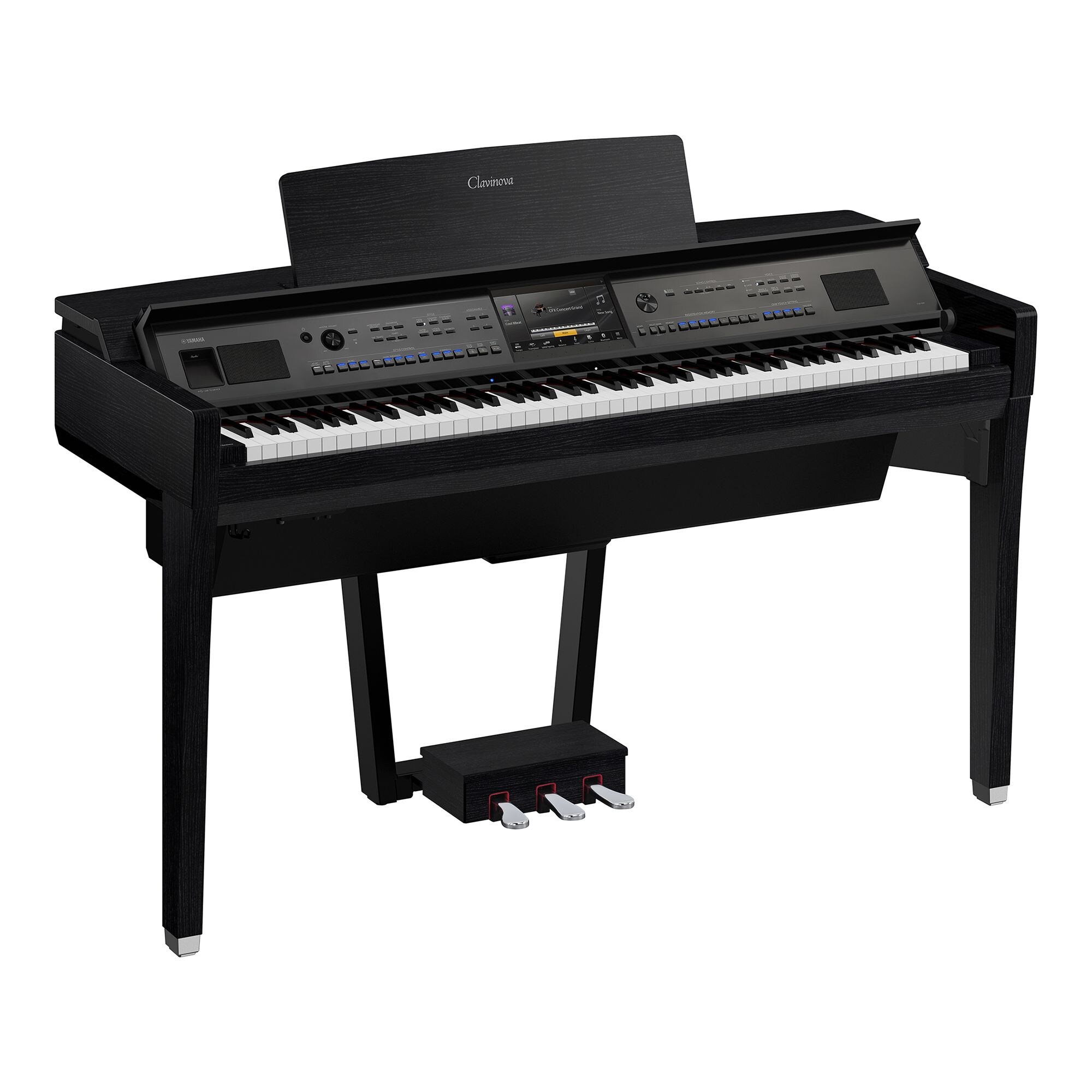Have you been struggling to keep track of all the piano scales? As a beginner pianist, it can be overwhelming trying to master each and every one. From major scales to minor scales, chromatic scales to exotic ones- how many are there exactly? Well, let me tell you from personal experience, there’s quite a lot! But don’t worry – I’ve got you covered.
In this article, I’ll break down everything you need to know about piano scales and give you tips on how to master them effectively. We’ll discuss the different types of piano scales, their unique characteristics and fingerings, as well as their importance in developing your overall skills as a pianist. Whether you’re just starting out or looking for new challenges as an experienced player, this comprehensive guide will help you understand just how many piano scales there are and how to conquer them all. So let’s grab our keyboards and dive into the world of music theory together!
So, how many piano scales are there?
There are 12 major scales and 12 minor scales, making a total of 24 piano scales. However, there are also different variations and modes within these scales that can be explored and mastered. So in reality, the number of piano scales is infinite as there is always something new to learn and discover.
Mastering all of these piano scales may seem daunting at first, but with dedication and practice, it can greatly improve your skills as a pianist. Each scale has its own unique sound and character, which allows for endless possibilities when creating music.
It’s important to note that while learning all of the piano scales is beneficial, it’s not necessary to become a great pianist. Many famous musicians have achieved success without mastering every single scale.
However, practicing different piano scales can help improve finger dexterity, hand coordination, and overall understanding of music theory. It also allows for more versatility in playing various genres of music.
So whether you choose to master all 24 traditional piano scales or just focus on a few key ones that interest you, incorporating them into your practice routine will undoubtedly enhance your musical abilities. Happy playing!
Understanding the Basics: Major and Minor Piano Scales
Understanding the fundamentals of music theory is like learning the alphabet before writing sentences. For piano players, these ABCs are composed of major and minor scales. Major scales have a cheerful tone, while minor scales tend to sound sadder or more serious. Both types are essential for songwriting and improvisation, shaping the mood and style of any piece.
To understand major scales on a piano, think about going up the staircase from C to C in all white keys – that’s a basic C Major scale. The pattern for creating any major scale is simple: Start on your root note (i.e., first key), then follow this sequence: whole step (two half steps), whole step, half step (one key to its immediate next), whole step, whole step, whole step and finally another half-step back to your root note but an octave higher.
- A ‘whole’ refers to two adjacent keys including both black and white.
- ‘Half’ means moving just one key up or down regardless of color.
In contrast, minor scales present more complex patterns; however even they adhere to specific rules. First off there are three types: natural minor scale which mirrors it’s major counterpart except starting on the 6th degree; harmonic where seventh note gets raised by a half-step; melodic consists two forms – ascending form raises sixth & seventh notes while descending reverts them back as in natural version. All these evoke different feelings when played making them valuable tools for composers.
- Natural Minor Scale follows this pattern: Whole-half-whole-whole-half-whole-whole.
- In Harmonic Minor Scales we get an exotic sounding leap near end due raised seventh degree e.g., if A is our base then G becomes G# giving us nice eastern feel!
- Melodic Minor Scales, usually used in Jazz, have varied scales when ascending and descending making them truly dynamic.
In conclusion, understanding major and minor scales is the baseline for musical creativity on the piano. They are not just sequences of keys – they’re a language with which we share emotions.
Exploring Advanced Piano Scales: Chromatic, Blues, and Pentatonic Scales
Exploring Advanced Piano Scales: Chromatic, Blues, and Pentatonic Scales
Unleashing the musical potential hidden in your fingers begins with mastering advanced piano scales. The chromatic scale, a splendid cascade of notes, stands as one of the pillars in this domain. Each note is a half-step or semitone away from its neighbors – it’s like climbing up a staircase where each step is exactly equal to the last. Your journey through every single key on the piano produces a melody that’s both uniform and unpredictable. This scale isn’t confined to any particular key, serving as an exquisite tool for transitions.
The blues scale breathes life into jazz and rock music with its soulful tones. It maps out an emotional terrain filled with depth and grittiness – all packed into just six notes! Comparatively simple in structure but powerful in effect; imagine standing at the edge of a cliff overlooking jagged peaks under stormy skies.
- C Major blues uses C-E♭-F-F#-G-B♭-
- A Major blues contains A-C-D-D#-E-G-
If you’re dreaming about creating catchy riffs or improvising melodies effortlessly then explore the versatile pentatonic scales. With only five notes per octave (hence ‘penta’), they’re stripped down versions of major or minor scales which avoid potentially clashing tones.
- A minor pentatonic has A-C-D-E-G-
- E minor pentatonic uses E-G-A-B-D-
This simplicity can be liberating; reducing complexity while amplifying creativity.
Read also: how many piano scales are there
Diving into Exotic Music with Whole Tone and Enigmatic Scales
Diving into Exotic Music with Whole Tone and Enigmatic Scales is like being invited to a mysterious banquet where every dish is unfamiliar yet incredibly exciting. The beauty of these scales lies in their non-traditional structure which gives the music an enigmatic, otherworldly character.
The Whole Tone scale, for instance, comprises six notes each separated by an interval of one whole step. This creates a dreamy effect because it lacks the sense of resolution we usually find in traditional major or minor scales. Imagine floating on gentle waves under a cerulean sky; there’s no particular destination, just endless serene blue stretching out before you. It’s like Debussy’s “Voiles,” transporting listeners onto an open sea with its ethereal soundscape.
The Enigmatic Scale, on the other hand, boasts seven notes – but they’re not what you’d expect! Its unconventional intervals mix major and minor tonalities that generate mystery and intense emotions like no other scale can offer.
- The first jump from root to second note happens to be a whopping augmented fourth
- The midpoint features three consecutive half steps
In essence, this scale plays tricks with your ears—shifting shadows flickering at the edge of awareness. Puccini famously used it in his opera “Turandot” to portray exoticism and drama simultaneously.
So indulge yourself – take a dive into this fascinating world of exotic music where every melody tells an extraordinary tale spun from Whole Tone and Enigmatic Scales.
 how many piano scales are there
how many piano scales are there
Mastering Effective Practice Techniques for Learning All Piano Scales
Mastering Effective Practice Techniques for Learning All Piano Scales
Playing piano scales might initially seem like a Herculean task, but with the right practice techniques, this too can become an enjoyable part of your musical journey. It’s more than just playing a succession of notes in an ascending and descending order. Scales form the building blocks of music; they are the DNA of melodies, harmonies and chords that we listen to everyday.
Start Slow – Speed Comes Later
Here’s how you can master them: start off slow! There’s no reason to rush into things. The ultimate goal is not speed but precision, clarity and fluency. Once you’ve got those down pat at a slower pace, then it’ll be far easier and effective to gradually increase your speed while maintaining your accuracy.
Regular practice is paramount – set aside some time each day purely dedicated to practicing scales.
Keep in mind though that “quality always trumps quantity”. A focused 15 minutes spent on deliberate scale play will reap better results than hours spent aimlessly tinkering around.
Next comes finger placement; knowing which finger goes where makes all the difference when it comes to smooth execution of scales.
- The thumb (finger 1) generally plays C,D,E flat,F,G,A flat,and B flat.
- Fingers 2-3-4 usually play D,E,F sharp,G sharp,A,B,C sharp,and D sharp.
- The pinky (finger 5) handles E natural,A natural,B natural,E flat,B flat,A sharp,D natural,and G natural.
Use these bullet points as guidelines – they aren’t gospel truths because every pianist eventually finds their comfortable style.
Lastly remember that patience is key. Progress may appear slow but rest assured that it’s happening with every note you accurately hit out there.
Tackle One Scale at a Time
It’s easy to get overwhelmed with the plethora of scales available. So, instead of scattering your focus trying to learn them all simultaneously, tackle one scale at a time. Start with the simplest ones like C Major or A minor and gradually build up from there to more complex scales.
Each scale has its unique structure – try visualizing each one on the keyboard; this will make it easier for your fingers to find and remember their places.
Remember that practice makes perfect! As you work through these steps, you’ll find yourself becoming more confident in playing piano scales.
You may also like: kimball vs yamaha piano
Conclusion: The Unlimited Potential of Mastering all Piano Scales
In finally understanding the depth of piano scales, we open up a world teeming with musical possibilities. Mastering all piano scales isn’t just about repeating sequences of notes over and over again; it’s an exploration into the very fabric that makes music so captivating. As you delve into this journey, each scale becomes a launching pad for personal expression and creative improvisation. Given time and practice, your fingers will glide effortlessly across the keys, interpreting every minor or major scale like rhythmic landscapes whispering stories to be told.
The unlimited potential shines through when you begin to see scales not as limitations but as pathways to infinite melodies. With each octave climbed or descended, there are countless variations waiting to be discovered – ripe fruits hanging from melodic trees ready for plucking! The beauty lies in how these patterns can intertwine with chords,
harmonies,
dynamics,
rhythms – forming complex musical tapestries that have the power to evoke profound emotion.
- A melancholic minor scale can drape listeners in a hauntingly beautiful sadness.
- An upbeat major scale might paint vibrant strokes of joy onto their hearts.
Tapping into this vast repertoire of sounds equips us with an incredibly versatile toolset for composition and performance alike. Through mastering all piano scales, we find ourselves truly at one with our instrument – able sing any song our soul desires.

